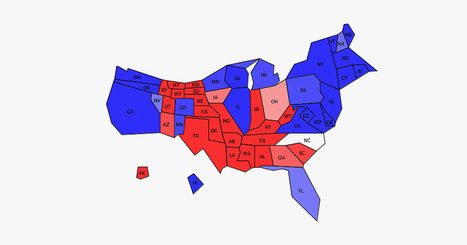There’s a lot of talk right now that polling failed. But Trump’s win was hardly an unpredictable “black swan” event. All the evidence was there, if you knew how to read it.In fact, the polls did ok, 2016 was not even a particularly large miss by historical standards.
Most states ended up within the polling margin of error, and the more careful forecasts only gave Clinton a 70 percent chance. By the last week before the election, a Trump victory was twice as likely as losing a game of Russian Roulette.
Yet the most optimistic predictions gave Clinton a 90 percent chance, because they missed a fundamental fact: polling errors tend to affect many states at once, and in the same direction.
To understand the vast gulf between 70 percent and 90 percent it helps to convert probabilities to odds, the ratio of chances to win against chances to lose. A 50% chance is a coin flip, or 1:1 odds. A 66% chance – around where FiveThirtyEight’s put Clinton the last week before the election – is 66:33 or 2:1 odds. If you roll that die, it shouldn’t be surprising when it comes up red....



 Your new post is loading...
Your new post is loading...















A rationalization, an excuse and an explanation all wrapped up in one post on how the polls actually weren't wrong, people were. Do you buy it?